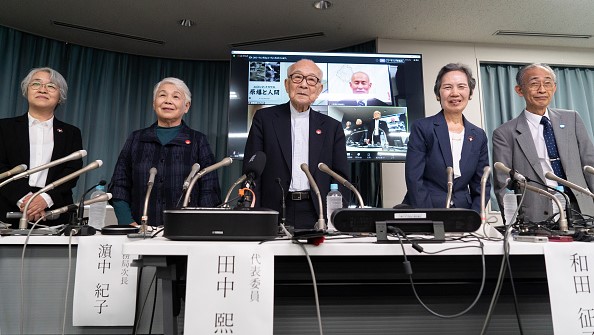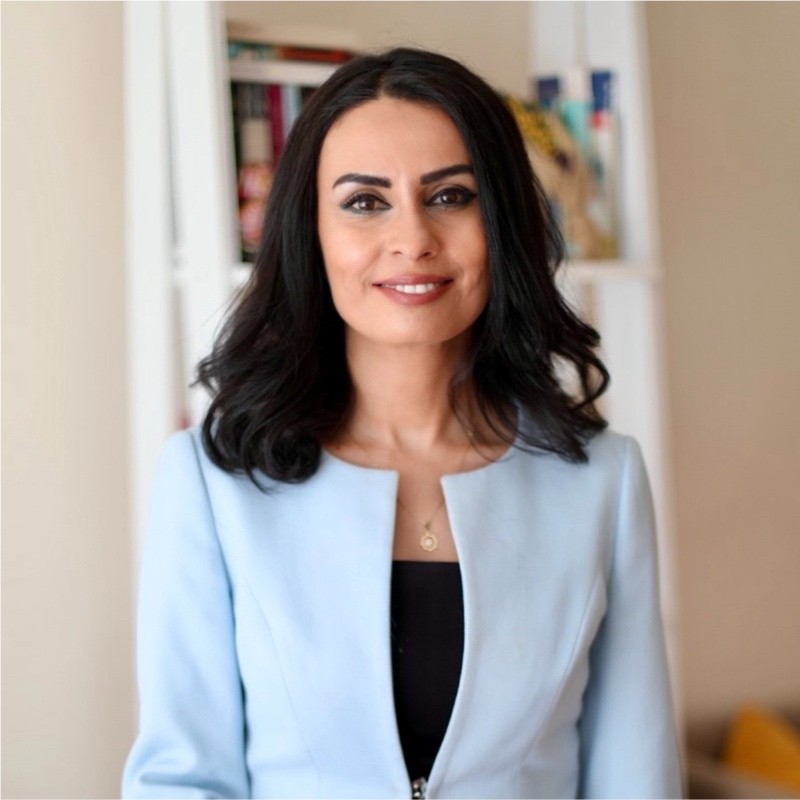Voices from the Sylff Community
Oct 24, 2024
The Age of Uncertainty and Nuclear Proliferation
In an article that was originally published in Turkish in Gazete Duvar, Mühdan Sağlam (Ankara University, 2015–16) discusses the dysfunction of the liberal global system, citing the Nobel Peace Prize awarded to Nihon Hidankyo to highlight heightening nuclear proliferation risks and the need for disarmament.
* * *
The deadlock in the liberal global system has of late become clear for anyone to see. The system has long been marked by imbalances, double standards, and the disproportionate decision-making clout of the Security Council’s five veto-wielding countries. In fact, these inequalities have been pointed out since the United Nations was founded in 1945, as suggested in the speech by its second Secretary-General Dag Hammarskjöld that the “UN was not created in order to bring us to heaven, but in order to save us from hell.”
Although international relations experts point to different dates and events as to when the system reached a standstill, almost all agree that it has now become dysfunctional. There is no telling what a new replacement system would look like, but there are expectations.
Some experts posit the possibility of a new bipolar order, while others caution against the potential for Chinese hegemony. There are also those suggesting that we may enter an “age of disorder” and that we need to take a broader look at history.
The current uncertainty and lack of direction serve to highlight the significant risk of a major conflict. One fundamental question that must be addressed is whether war will accompany the transition to a new order (or disorder). Providing a definitive answer at this time would be difficult, but we can nonetheless examine the pertinent issues, particularly the possibility of the use of nuclear weapons. The focus of my article will be on nuclear armament and its potential for creating a state of perpetual conflict.
“Now I Am Become Death, the Destroyer of Worlds”
Toward the conclusion of World War II, a considerable number of experts hypothesized that the atomic bombing of a nation that was already prepared to capitulate altered the trajectory of global history, if not the war itself. The bomb was developed as part of the US Manhattan Project and dropped first on Hiroshima and then Nagasaki, causing unprecedented suffering to the civilian population and destruction of infrastructure.
The world gained its first glimpse of the concept of nuclear weapons through this devastating and inhumane attack. Indeed, in response to the devastation he had unleashed, the head of the Manhattan Project, J. Robert Oppenheimer, stated in an interview in the 1960s that he recalled a line from the Bhagavad Gita: “Now I am become death, the destroyer of worlds.” The contradictions, dilemmas, and remorse felt by the physicist are portrayed in Christopher Nolan’s award-winning 2023 biopic. Nolan did not include images of the people who died in Japan; instead, he allowed their screams to resonate. Those screams have done little, however, to prevent the world from moving ahead with nuclear armament.
The Nobel Peace Prize in 2024 was bestowed upon the Japanese organization Nihon Hidankyo in recognition of its contributions to the global effort toward nuclear disarmament. The official announcement of the Norwegian Nobel Committee states, “This grassroots movement of atomic bombing survivors from Hiroshima and Nagasaki, also known as Hibakusha, is receiving the Peace Prize for its efforts to achieve a world free of nuclear weapons and demonstrating through witness testimony that nuclear weapons must never be used again.”

Members of Nihon Hidankyo, a grassroots Japanese organization of atomic bomb survivors from Hiroshima and Nagasaki, hold a press conference after winning the 2024 Nobel Peace Prize. ©Tomohiro Ohsumi / Getty Images
The organization states on its website, “We hibakusha have been describing the realities of the damage of the atomic bombing and appealing on our suffering, because we want that no one else should ever suffer the hell we have experienced.” Following the award, the co-chair of the group has drawn parallels between the experiences of hibakusha 80 years ago and people in Gaza today. “Children are being covered in blood and living every day without food.”
This serves to remind us of the gravity of the current situation and the necessity of pursuing a path to peace and disarmament. The formation of a mushroom cloud and the subsequent blinding ball of flames are not prerequisites for creating hell on earth. In the period since 1945, what actions have been taken on the global stage to prevent human suffering?
As Nihon Hidankyo maintains its stance against nuclear weapons, it appears that for some, anti-nuclearism has become a mere rhetorical device employed in ostentatiously decorated halls of power. Let us now examine the sequence of events and the current situation.
Embracing the Bomb to Win the Arms Race
The global landscape during the Cold War was characterized by the coexistence of two distinct centers of economic and political influence: the USSR and the Eastern bloc on one side, and the US and the Western camp on the other. Common to both systems, however, was that they were engaged in the arms race, which meant that the path to being first required a focus on developing and utilizing weapons of mass destruction.
In 1945, the United States dropped two atomic bombs on Japan, which the Soviet Union interpreted as a message directed at itself. In response, the Soviet Union accelerated the development of nuclear weapons. When the USSR successfully tested its first atomic bomb in 1949, the United States, which had been developing nuclear weapons since the 1930s, was still in the lead. Two years later, the United States proceeded to test a hydrogen bomb.
In 1953, the USSR, too, conducted a nuclear test involving a hydrogen bomb. And the 1957 launch of the Soviet Union’s artificial satellite, Sputnik, into space had a profound impact on the global landscape, intensifying the already palpable sense of dread surrounding an impending nuclear conflict and the underlying geopolitical tensions.
The launch of Sputnik conveyed a clear message: If one possessed the capability to launch an artificial satellite into space, it would be possible to attach a nuclear warhead to the satellite’s head, transform it into a missile, and subsequently target US territory. One of the world’s superpowers was now confronted with the imminent threat of a potential nuclear attack.
In response to the perceived threat of imminent nuclear attack, the United States increased its nuclear weapons arsenal. This process resulted in a significant strategic transformation within the North Atlantic Treaty Organization (NATO), which had been established by the United States. The deployment of “medium-range guided missiles” on the territories of allied nations in close proximity to the Soviet Union was initiated. The world was gradually becoming an unparalleled arsenal.
Disarmament Treaties: Short-Lived Period of Prudence
The concept of the “balance of terror,” which was used to describe the arms race during the Cold War, is no longer a suitable description, as it does not reflect the rational limits of the situation. Instead, it better describes the intense emotions that are generated by this race. The 1962 Cuban Missile Crisis served as a stark reminder to both parties that they were on the verge of a catastrophic outcome. After this crisis, the United States and the Soviet Union entered into the Strategic Arms Limitation Talks (SALT), which resulted in the signing of the Strategic Arms Limitation Treaty (SALT I and SALT II) and the subsequent Strategic Arms Reduction Treaty (START). These treaties sought to limit the deployment of ballistic nuclear missiles. This was followed by the signing of the Anti-Ballistic Missile Treaty (ABM) in 1972. Notwithstanding these agreements, the budgets allocated by both parties for armaments continued to rise.
The nuclear threat, which reached its peak during the Ronald Reagan administration, entered a new phase with the USSR’s economic and social exhaustion. Mikhail Gorbachev’s “new thinking” (novoye myshleniye) policy facilitated the resumption of nuclear disarmament negotiations in 1985. Following negotiations between Reagan and Gorbachev, the Intermediate-Range Nuclear Forces (INF) Treaty was concluded in 1987, resulting in the destruction of approximately 2,700 missiles. This collaborative approach to nuclear disarmament was further extended to encompass restrictions on conventional weapons in Europe. However, this period of reason and prudence was not to last long.
Appealing for an End to the Cycle of Violence
Some of the agreements concluded were subsequently nullified as a result of changes in circumstances. These actions were taken with a degree of audacity that demonstrates a lack of awareness of historical precedent. This approach showed a disregard for the concept of historical continuity, as encapsulated in the phrase was prevalent in the early 2000s, “Yesterday was yesterday, and today is today.”
In 2019, the United States withdrew from the INF Treaty. In the context of the war in Ukraine, Russian President Vladimir Putin announced the suspension of START, which had been extended for five years in 2021. He stated, “Today I have to announce that Russia is suspending the START treaty,” adding, “Of course, we won’t be the first, but if the United States conducts nuclear tests, so will we.”
While tensions escalated between the United States and Russia, the rest of the world remained in a state of vigilance, anticipating potential outcomes and seeking to ensure a well-prepared response. The Stockholm International Peace Research Institute (SIPRI)’s 2024 yearbook, Armaments, Disarmament and International Security, indicates that as of January 2024, nine states, namely, the United States, Russia, the United Kingdom, France, China, India, Pakistan, North Korea, and Israel, possessed a total of 12,121 nuclear weapons, of which 9,585 were operational. Approximately 4,000 of these were deployed and under the control of operational forces.
The aggregate data suggests a decline in the number of nuclear warheads, but this is merely a consequence of the dismantlement of retired warheads by Russia and the United States. By contrast, numerous states with relatively modest nuclear arsenals, including China and the United Kingdom, are either augmenting or intending to expand their nuclear capabilities.
In the United States, several polls conducted in the weeks preceding the presidential election indicate that the two candidates are in a statistical tie. It is unfortunate that we are not yet in a position to determine the extent to which the situation could potentially be worse than the damage caused by the Joe Biden administration.
We are at a critical juncture where all the available options seem unsatisfactory. And it would be untenable to frame the least unfavorable outcome as being the optimal one. The global system is currently at a standstill, the world has become a veritable arsenal, and the future is fraught with potential for further conflict. In the light of these circumstances, Nihon Hidankyo and the civilians who have suffered as a result of the ongoing war and terrorist attacks in the Middle East are once again appealing to humanity to put an end to this senseless cycle of violence.
